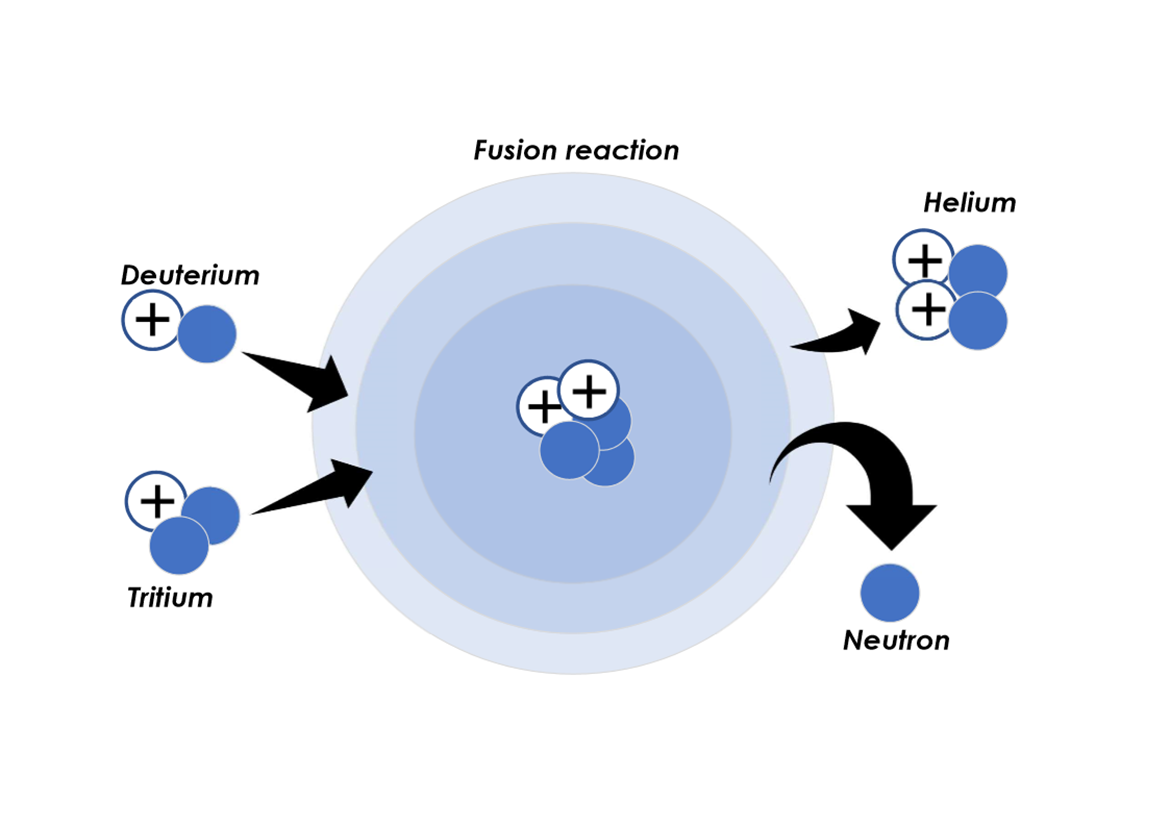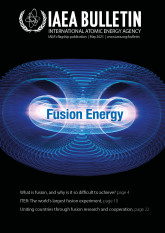
If you would like to learn more about the IAEA’s work, sign up for our weekly updates containing our most important news, multimedia and more.
What is Fusion, and Why Is It So Difficult to Achieve?
Irena Chatzis, Matteo Barbarino
What is Fusion
Five hundred years ago, the Aztec civilization in today’s Mexico believed that the sun and all its power was sustained by blood from human sacrifice. Today, we know that the sun, along with all other stars, is powered by a reaction called nuclear fusion. If nuclear fusion can be replicated on earth, it could provide virtually limitless clean, safe and affordable energy to meet the world’s energy demand.
From 10-15 May, fusion project leaders, plasma physicists and experts in the various multidisciplinary fields of fusion science and technology are gathering for the ‘28th IAEA Fusion Energy Conference’ (FEC 2020). Exploring key physics and technology issues as well as innovative concepts of direct relevance to the use of nuclear fusion as a future source of energy, FEC 2020 is completely virtual and open for anyone to attend. Register to attend.
So how exactly does nuclear fusion work? Simply put, nuclear fusion is the process by which two light atomic nuclei combine to form a single heavier one while releasing massive amounts of energy. Fusion reactions take place in a state of matter called plasma — a hot, charged gas made of positive ions and free-moving electrons that has unique properties distinct from solids, liquids and gases.
To fuse on our sun, nuclei need to collide with each other at very high temperatures, exceeding ten million degrees Celsius, to enable them to overcome their mutual electrical repulsion. Once the nuclei overcome this repulsion and come within a very close range of each other, the attractive nuclear force between them will outweigh the electrical repulsion and allow them to fuse. For this to happen, the nuclei must be confined within a small space to increase the chances of collision. In the sun, the extreme pressure produced by its immense gravity create the conditions for fusion to happen.
The amount of energy produced from fusion is very large — four times as much as nuclear fission reactions — and fusion reactions can be the basis of future fusion power reactors. Plans call for first-generation fusion reactors to use a mixture of deuterium and tritium — heavy types of hydrogen. In theory, with just a few grams of these reactants, it is possible to produce a terajoule of energy, which is approximately the energy one person in a developed country needs over sixty years.

A mixture of deuterium and tritium — two hydrogen isotopes — will be used to fuel future fusion power plants. Inside the reactor, deuterium and tritium nuclei collide and fuse, releasing helium and neutrons. (Image: IAEA/M. Barbarino)
Reaching for the stars
While the sun’s massive gravitational force naturally induces fusion, without that force a higher temperature is needed for the reaction to take place. On earth, we need temperatures exceeding 100 million degrees Celsius and intense pressure to make deuterium and tritium fuse, and sufficient confinement to hold the plasma and maintain the fusion reaction long enough for a net power gain, i.e. the ratio of the fusion power produced to the power used to heat the plasma.
While conditions that are very close to those required in a fusion reactor are now routinely achieved in experiments, improved confinement properties and stability of the plasma are needed. Scientists and engineers from all over the world continue to test new materials and design new technologies to achieve fusion energy.
Nuclear fusion and plasma physics research are carried out in more than 50 countries, and fusion reactions have been successfully achieved in many experiments, albeit without demonstrating a net fusion power gain. How long it will take to recreate the process of the stars will depend on mobilizing resources through global partnerships and collaboration.
A history of collaboration
Ever since nuclear fusion was understood in the 1930s, scientists have been on a quest to recreate and harness it. Initially, these attempts were kept secret. However, it soon became clear that this complex and costly research could only be achieved through collaboration. At the second United Nations International Conference on the Peaceful Uses of Atomic Energy, held in 1958 in Geneva, Switzerland, scientists unveiled nuclear fusion research to the world.
The IAEA has been at the core of international fusion research. The IAEA launched the Nuclear Fusion journal in 1960 to exchange information about advances in nuclear fusion, and it is now considered the leading periodical in the field. The first international IAEA Fusion Energy Conference was held in 1961 and, since 1974, the IAEA convenes a conference every two years to foster discussion on developments and achievements in the field.
After two decades of negotiations on the design and location of the world’s largest international fusion facility, ITER was established in 2007 in France, with the aim of demonstrating the scientific and technological feasibility of fusion energy production. The ITER Agreement is deposited with the IAEA Director General. After ITER, demonstration fusion power plants, or DEMOs are being planned to show that controlled nuclear fusion can generate net electrical power. The IAEA hosts workshops on DEMOs to facilitate collaboration in defining and coordinating regular DEMO programme activities around the world.
It is expected that fusion could meet humanity’s energy needs for millions of years. Fusion fuel is plentiful and easily accessible: deuterium can be extracted inexpensively from seawater, and tritium can be produced from naturally abundant lithium. Future fusion reactors will not produce high activity, long lived nuclear waste, and a meltdown at a fusion reactor is practically impossible.
Importantly, nuclear fusion does not emit carbon dioxide or other greenhouse gases into the atmosphere, and so along with nuclear fission could play a future climate change mitigating role as a low carbon energy source.





